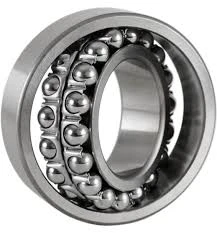
Dec . 11, 2024 00:47 Back to list
Design Specifications for Angular Contact Ball Bearing Blueprint Representation
Understanding Angular Contact Ball Bearings Design and Applications
Angular contact ball bearings are essential components in various mechanical systems, known for their ability to support both radial and axial loads. These bearings are widely employed in applications requiring high precision, speed, and durability, making them crucial in industries like aerospace, automotive, and heavy machinery.
Design Characteristics
The design of angular contact ball bearings features an inner ring, an outer ring, and a set of balls that are positioned at a specific angle to the raceways. This unique arrangement allows them to handle loads from different directions, unlike standard radial ball bearings, which can only accommodate radial loads. The angle of contact, typically 15°, 25°, or 40°, directly influences the bearing's load-handling capacity.
When visualizing the design, it is essential to note the raceway geometry. The inner and outer ring raceways are crafted to match the angle of the balls. This configuration not only optimizes load distribution but also enhances the overall stability of the bearing under dynamic conditions. A well-designed angular contact ball bearing ensures minimal friction, increasing the longevity and reliability of the machinery it supports.
Technical Specifications
Angular contact ball bearings come with various technical specifications that must be carefully examined during selection. The key specifications include
1. Load Ratings These indicate the maximum load the bearing can handle. The dynamic and static load ratings determine the bearing's performance and lifespan. 2. Speed Ratings Each bearing type has a defined maximum speed, beyond which the risk of failure increases. This rating is crucial for applications involving high-speed rotation. 3. Dimensions The inner and outer diameters, width, and overall design play a critical role in the bearing's fit and function. Proper dimensional accuracy is vital for successful integration into machinery.
4. Lubrication The choice of lubrication—whether grease or oil—impacts the bearing's operational efficiency and lifespan. Many angular contact bearings are pre-lubricated, providing a significant advantage in terms of maintenance.
5. Material Common materials include high-carbon chrome steel, ceramic, and stainless steel. Each material offers distinct advantages concerning wear resistance, load handling, and environmental resistance.
angular contact ball bearing drawing

Applications
Due to their versatile design and robust performance, angular contact ball bearings are used in numerous applications
1. Aerospace These bearings support critical aircraft components due to their reliability under extreme conditions. They are used in landing gear, engines, and various control systems.
2. Automotive Angular contact ball bearings are found in wheel hubs, transmissions, and electric motors. Their ability to handle axial loads while maintaining high-speed rotation makes them ideal for automotive applications.
3. Machine Tools High-precision machinery leverages angular contact bearings for their rigidity and load-handling capabilities. They contribute to the accuracy required in CNC machines and lathes.
4. Robotics In the field of robotics, these bearings facilitate precise movement and control, essential for operational efficiency.
5. Industrial Equipment Conveyor systems, pumps, and compressors often utilize angular contact ball bearings to ensure steady operation under varying loads.
Conclusion
In summary, angular contact ball bearings are vital components in modern machinery, facilitating high performance and reliability across various applications. Their unique design enables them to manage complex load scenarios, making them indispensable in industries where precision and durability are paramount. Understanding their technical specifications and applications is crucial for engineers and designers seeking to optimize machine performance and longevity. As technology advances, the innovation surrounding angular contact ball bearings will continue to play a significant role in the future of mechanical engineering and industrial applications.
Latest news
-
Grooved Ball Bearing Design and Functionality
NewsJun.04,2025
-
Concrete Mixer Bearing Load Capacity Testing
NewsJun.04,2025
-
6004 Bearing Dimensions in Robotic Joint Designs
NewsJun.04,2025
-
Advantages of Single-Row Deep Groove Ball Bearings
NewsJun.04,2025
-
Applications of Deep Groove Ball Bearings in Automotive Systems
NewsJun.04,2025
-
Innovations in Bearing Pressing Machine Design
NewsJun.04,2025
